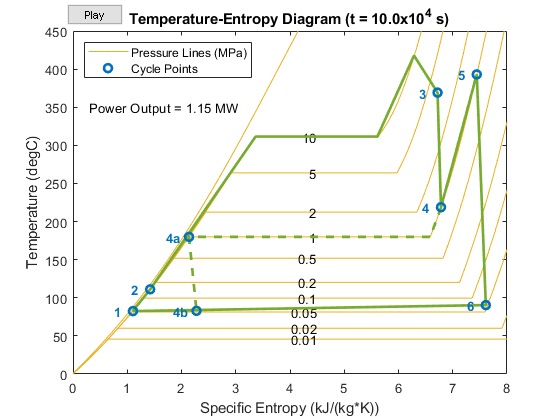Rankine Cycle (Steam Turbine)
This example models a steam turbine system based on the Rankine Cycle. The cycle includes superheating and reheating to prevent condensation at the high-pressure turbine and the low-pressure turbine, respectively. The cycle also has regeneration by passing extracted steam through closed feedwater heaters to warm up the water and improve cycle efficiency.
The Saturated Fluid Chamber block and the Turbine block are custom components based on the Simscape™ Foundation Two-Phase Fluid Library. The Saturated Fluid Chamber block models a separate saturated liquid volume and saturated vapor volume and is used to create the boiler and the condenser.
Model

Feedwater Preheater Subsystem

Steam Boiler Subsystem
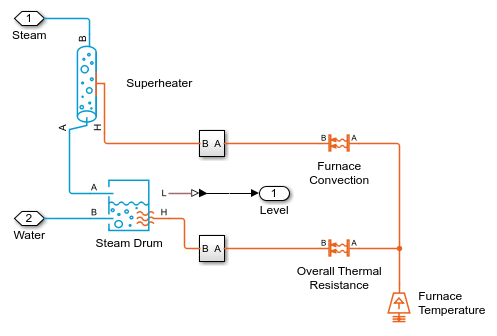
Steam Condenser Subsystem
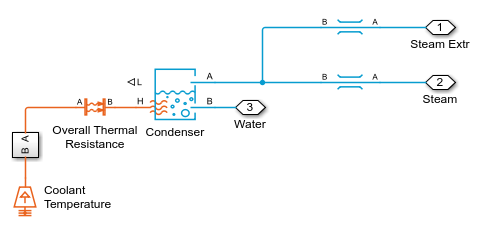
Steam Reheater Subsystem

Simulation Results from Scopes
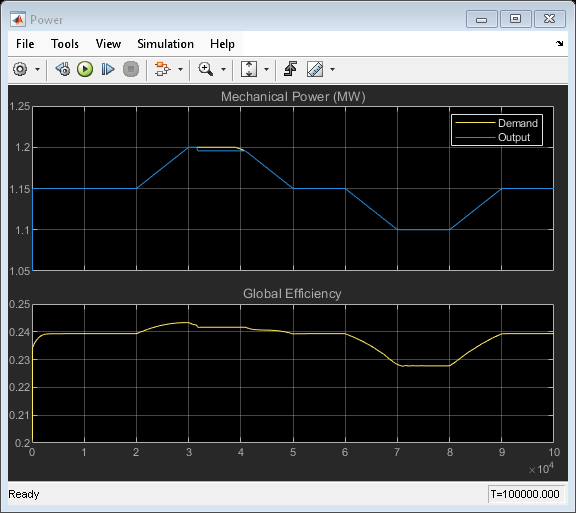
Simulation Results from Simscape Logging
This plot shows the energy exchanges in the system. Heat from the furnace is added by the boiler, the superheater, and the reheater. Useful work is extracted from the steam by the high-pressure turbine (HPT) and the low-pressure turbine (LPT). Waste heat is rejected to the coolant in the condenser. Heat is also transferred from the extracted steam to the feedwater to improve thermal efficiency.
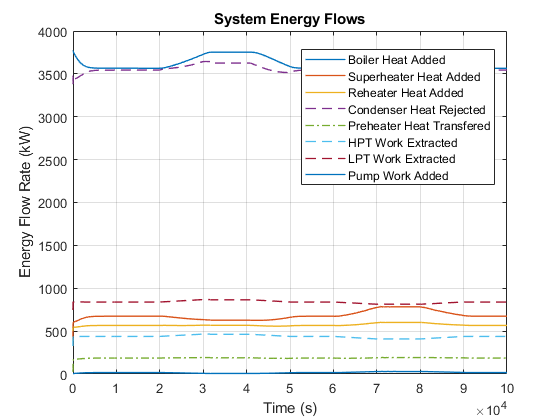
This plot shows the mass flow rates through the system. A portion of the steam is extracted between the high-pressure turbine (HPT) and the low-pressure turbine (LPT). The extracted steam is used to warm up the feedwater before rejoining the main flow at the condenser. The flow rates of the main flow and the extracted steam are regulated by the controllers to maintain the liquid level in the boiler and the preheater condenser, respectively.
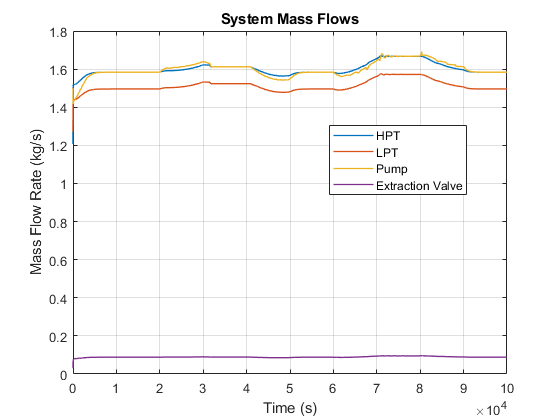
This figure shows an animation of the Rankine Cycle on a temperature-entropy diagram over time. The main steam flow corresponds to the loop from Cycle Points 1 to 6. The extracted steam flow corresponds to the dashed line from Cycle points 4 to 4b. In this model, the throttle valve before Cycle Point 3 provides a small amount of control over the power output.
